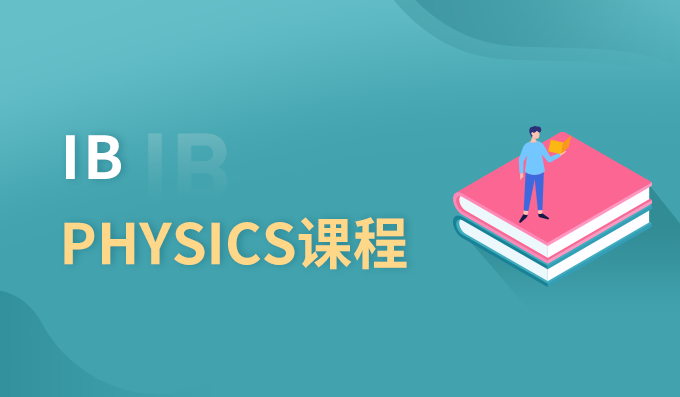宁波朗阁IB PHYSICS培训课程
宁波朗阁IB PHYSICS培训课程
- 上课时段:详见详情
- 教学点:1个
- 开班时间:滚动开班
- 课程价格:请咨询
- 已关注:783
- 优惠价格:请咨询
- 咨询电话: 400-008-6280


课程安排
| 课程阶段 | IB |
| 课时 | 36小时 |
| 课时安排 | 每次2小时,共18次课 |
| 课程教材 | Pearson Baccalaureate Higher Level Physics |
| 班级人数 | |
| 课程优惠 | 现在报名享受85折,团报可享折上折,送IB录播课。 |
课程优势
听力 |
写作 |
口语 |
语法 |
| 线上线下结合教学,直播授课,录播精讲精练。 | 线上线下结合教学,直播授课,录播精讲精练。 | 线上线下结合教学,直播授课,录播精讲精练。 | 线上线下结合教学,直播授课,录播精讲精练。 |
课程大纲
Session1
1.Fundamental quantities:基本的数量 2.Measurement:测量 3.Collecting data:收集数据 4.Presenting processed data:呈现数据的处理 5.Vectors and scalars:向量与矢量
Session2
6.Kinematics:力学 7.Free fall motion:自由落体运动 8.Graphical representation of motion:运动图像 9.Projectile motion:抛物运动 10.Forces and dynamics:力与动力学 11.Newton's laws of motion:牛顿力学定律 12.The relationship between force and acceleration:力与加速度的关系 13.Newton's third law:牛顿第三定律 14.Work, energy and power:功、能量与功率 15.Uniform circular motion:匀速圆周运动
Session3
16.Thermal concepts:热学概念 17.Thermal properties of matter:热学性质 18.Kinetic model of an ideal gas:理想气体的动力学模型 19.Thermodynamics:热力学 20.Thermodynamic processes:热力学进程 21.The second law of thermodynamics:热学第二定律
Session4
22.Kinematics of simple harmonic motion:简谐运动力学 23.Energy changes during simple harmonic motion(SHM):简谐运动过程中的能 量转换 24.Forced oscillations and resonance:受迫振动与共振 25.Wave characteristics:波的特性 26.Wave properties:波动性 27.Standing (Stationary) waves:驻波 28.The Doppler effect:多普勒效应 29.Diffraction at a single slit:单缝衍射 30.Resolution:分辨率 31.Polarization:极化 32.Uses of polarization:极化的运用
Session5
33.Electric potential difference, current and resistance:电势差、电流以及电阻 34.Electric circuits:电路
Session6
35.Gravitational force and field:重力与重力场 36.Gravitational potential:重力势 37.Escape speed:逃逸速度 38.Orbital motion:轨道运动 39.Electric force and field:电力与电场 40.Electric potential:电势 41.Magnetic force and field:磁力与磁场 42.Electromagnetic induction:电磁感应 43.Alternating current:交流电 44.Transmission of electrical power:电力传输
Session7
45.Atomic structure:原子结构 46.The quantum nature of light:光的量子性质 47.The wave nature of matter:物质的波动特性 48.Quantum models of the atom:原子的量子模型 49.Nuclear structure:核结构 50.Radioactive decay:放射性衰变 51.Half-life:半衰期 52.Nuclear reactions:核反应
Session8
53.Energy degradation and power generation:能量降级与发电 54.World energy sources:世界能源 55.Fossil fuel power production:化石燃料的产生 56.Nuclear power:核能 57.Solar power:太阳能 58.Hydroelectric power:水力发电 59.Wind power:风能 60.Wave power:波浪发电 61.The greenhouse effect:温室效应 62.Global warming:全球变暖 63.What might happen and what can be done?可能会发生什么?应该做些什么 事?
Session9
64.Analogue and digital signals:模拟信号与数字信号 65.Data capture;digital imaging:数据捕捉与数位成像
Session10
66.Introduction to the universe:宇宙简介 67.Stellar radiation and stellar types:星球的辐射以及星球的种类 68.Light from stars:源自群星的光 69.Types of star:星球的种类 70.Stellar distances:星球间的距离 71.Magnitude:量级 72.Stellar processes and stellar evolution:星球的进程以及演化 73.Cosmology:宇宙论 74.Development of the universe:宇宙的发展
Session11
75.Radio communication:无线电通信 76.Digital signals:数字信号 77.Optic fibre transmission:光纤传输 78.Channels of communication:通信渠道 79.Electronics:电子学 80.The mobile phone system:手机系统
Session12
81.The nature of EM waves and light sources:电磁波的性质与光能 82.X-rays:X射线 83.Two-source interference of waves:波的双源干涉 84.Interference by thin films:薄膜干涉 85.Interference by air wedges:气楔干涉 86.Diffraction grating:衍射光栅 87.X-ray diffraction:X射线衍射 88.Lenses and image formation:透镜以及成像 89.Optical instruments:光学仪器 90.Aberrations:像差
Session13
91.Special relativity:狭义相对论 92.Time dilation:时间膨胀 93.Length contraction:长度收缩 94.Mass and energy:质量与能量 95.General relativity:广义相对论 96.Space-time and black holes:时空与黑洞
Session14
97.The ear and hearing:耳朵与听觉 98.Medical imaging:医学成像 99.Radiation in medicine:药物辐射
Session15
100.Description and classfication of particles:粒子的描述与分类 101.Fundamental interactions:基本的相互作用 102.Particle accelerators:粒子加速器 103.Particle detectors:粒子探测器 104.Quarks:夸克 105.Feynmann diagrams:费因曼图 106.Experimental evidence for the quark and standard models:关于夸克的实验 证据以及标准模型 107.Cosmology and strings:宇宙学与弦论
Session16
Theory of knowledge:知识理论
Session17
Practice test one
Session18
Practice test two
IB课程
IB与 A-LEVEL课程和AP课程不同的是,IB 课程主张终身教育,开设从幼儿园到大学预科的课程。
为3-19岁的学生提供教育,使其获得学习,工作以及生存于世的各项能力。不同阶段的课程会有些不同,但是都有一个共同点是注重学生多方位的培养。
IB课程的教育目标是无论你处在哪个阶段都有相应的课程,目前IB教育共可被分为四个阶段。
小学教育(Primary Years Program)PYP
IB-PYP 课程是为3-12岁孩子设计的国际文凭小学项目,以小组合作学习、 项目式学习、探究式学习等方式进行学习。PYP 的六大跨学科探究主题如下:语言,社会学,个人与交往,数学,艺术,科学与技术
中学教育(Middle Years Program)MYP
IB-MYP的课程是为11-16岁阶段孩子(6到10年级),包括八个学科组:语言A、语言B、人文、科学、数学、艺术、技术与体育设计。此外,MYP 学生还必须参与至少一个由合作计划的跨学科单元(每年一个)且至少涉及两个学科组,以及一个长期的中学生个人项目。
高中教育(Diploma Program)DP
IB-DP课程学制两年(11-12年级),包括六大学科组:语言与文学研究、语言习得、个体与社会、科学学科、数学、艺术学科。每一组学科分为标准课程SL和高级课程HL,学生需要在每组选一门课程进行学习,其中三门必须是高级课程HL,每门课程7分制,广度和深度兼顾。同时,IBDP还设有三大核心课程:EE、TOK和CAS,三门核心总分是3分,核心课程也是必修,6+3的总分达到38分以上有机会申请国际一流大学。

扫描二维码免费领取试听课程

登录51乐学网
注册51乐学网